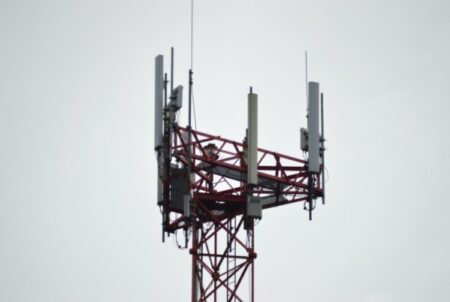Welcome back Jori Hamilton to 21st Century Tech Blog. This is Jori’s third contribution to the site and focuses on a subject that every smartphone user is asking about. Why should I move to a 5G smartphone? They cost more. What’s the advantage? Jori has been patient with me as I recover from my heart procedure over the last two weeks. I promised her I would finally get to her submission and hope you enjoy it. You can learn more about Jori by following her on Twitter: @HamiltonJori.
The fifth generation of wireless connectivity is making its way across the world. For businesses, this game-changing technology will have broad impacts on what businesses are able to achieve—especially through Internet of Things (IoT) devices.
5G means wider bandwidth and more connectivity, not just people-to-people, but people-to-devices, and devices-to-devices. It means the ability for business to mine even more data and respond to clients in near real-time.
5G represents an upgrade from 4G by a factor of 10. That means everything is faster, that more devices than ever before can be connected, that the promise of autonomous vehicles can become a reality,
Exploring some of the details should help you to understand how the integration of this technology is impactful beyond anything in telecommunications we have seen to date.
The 5G Revolution
5G stands for the fifth generation in mobile network connectivity. It isn’t limited to the newest smartphone models. In fact, its most significant innovation is the ability to connect many more people, machines, and devices than were ever possible before in a single network.
5G networks are already up and running in many countries and communities. You might even have a smartphone that supports the new telecommunication standard. It is intended to not just give us higher feeds and speeds, but greater reliability because the density of the network nodes (telecommunication towers) far surpasses that of 4G and the latter’s predecessors.
Facing the digital needs of a world reeling from the coronavirus pandemic, the arrival of 5G networks means innovative solutions as well as challenges for businesses as they shift to this new standard which better addresses the high-speed requirements of today and the future.
- Peak data rates up to 20 Gbps
- Ultra-low latency (no lag time)
- Download speeds up to 500% faster
- Integration needs that could support 22.8 million jobs
The benefits are a big step forward for business with 60% of executives already reporting new avenues of opportunity opened by 5G and the IoT. IoT will simply be better on 5G networks.
Better IoT with 5G
How so better? Connected IoT devices make it possible for vast networks to send and receive data. The result will be better insights into business processes, the condition of equipment, the status of inventory, and virtually anything else you can imagine with billions of sensors inter-communicating. Broader bandwidth will mean more awareness, more information, and more cost savings.
5G technology will impact business IoT devices by:
- Supporting one million connected devices per square kilometer (0.38 square miles). This means highly connected workplaces complete with high-speed sensing from embedded IoT devices.
- Providing ultra-reliable data transfer across the cloud to provide continuous real-time insights.
- Improving security through flexibility within 5G networks to allow for individuals and businesses to better protect confidential data.
These and more offerings from a highly connected network give business leaders the ability to monitor equipment and processes at an unprecedented scale. As a result, businesses can receive a productivity boost, allow new industries to emerge, and support smaller organizations during times of fluctuating supply and demand.
Large businesses will enjoy the scale and scope of data insights offered by 5G combined with IoT. This means the potential to revitalize and streamline industrial processes, logistics and supply channels.
Integrating 5G IoT
5G with IoT represents a game-changer. From smart factories to smart cities, managing the future requires the harmonization of IoT devices with the power and bandwidth of 5G. For businesses already using IoT it will be impossible to notice the difference.
But transitioning to 5G may require businesses to update computing and telecommunications devices and other parts of their network infrastructure which means there are new overheads to consider. Recouping the investment should happen pretty quickly as businesses see the value in the data mining, low latency, and connectivity that 5G will provide.
One final note of caution. Don’t neglect cybersecurity when integrating 5G and IoT devices into your IT and telecommunications infrastructure. As much as the technology will open new business opportunities, it will invite a new generation of cybercriminals seeking the weaknesses in your operating environment.









